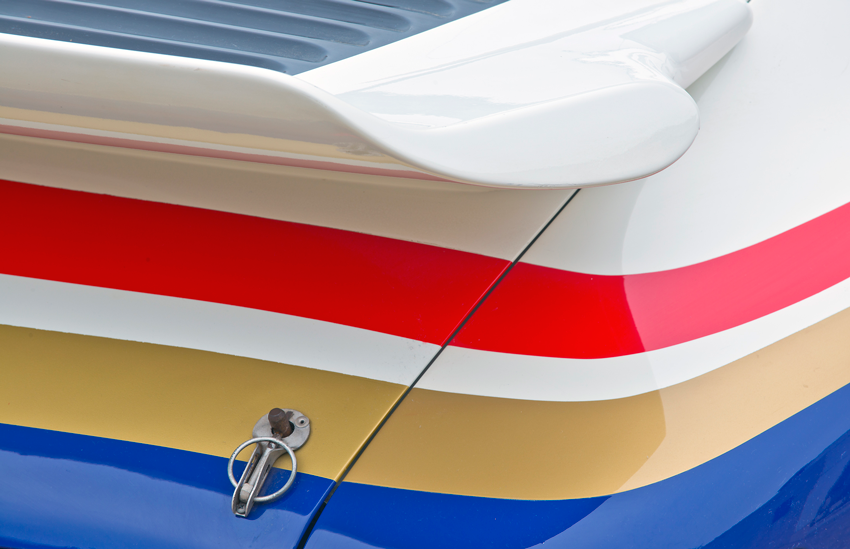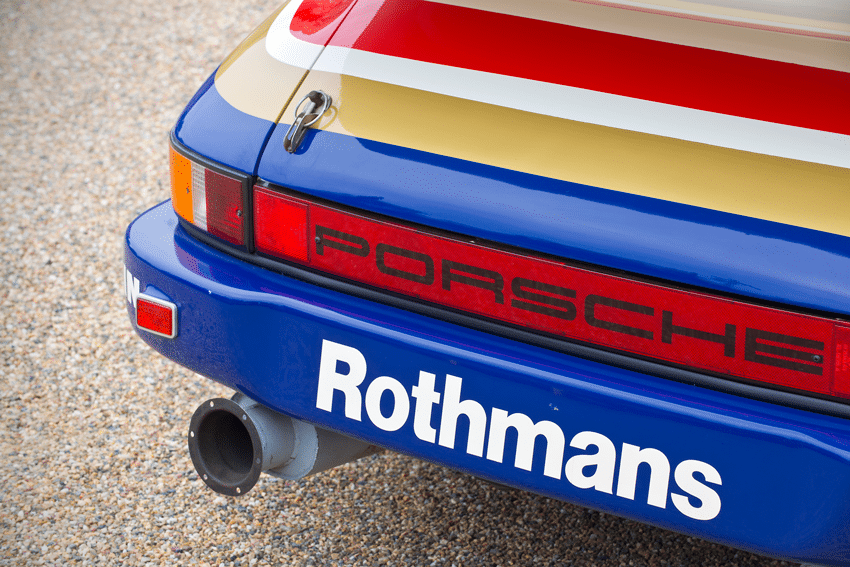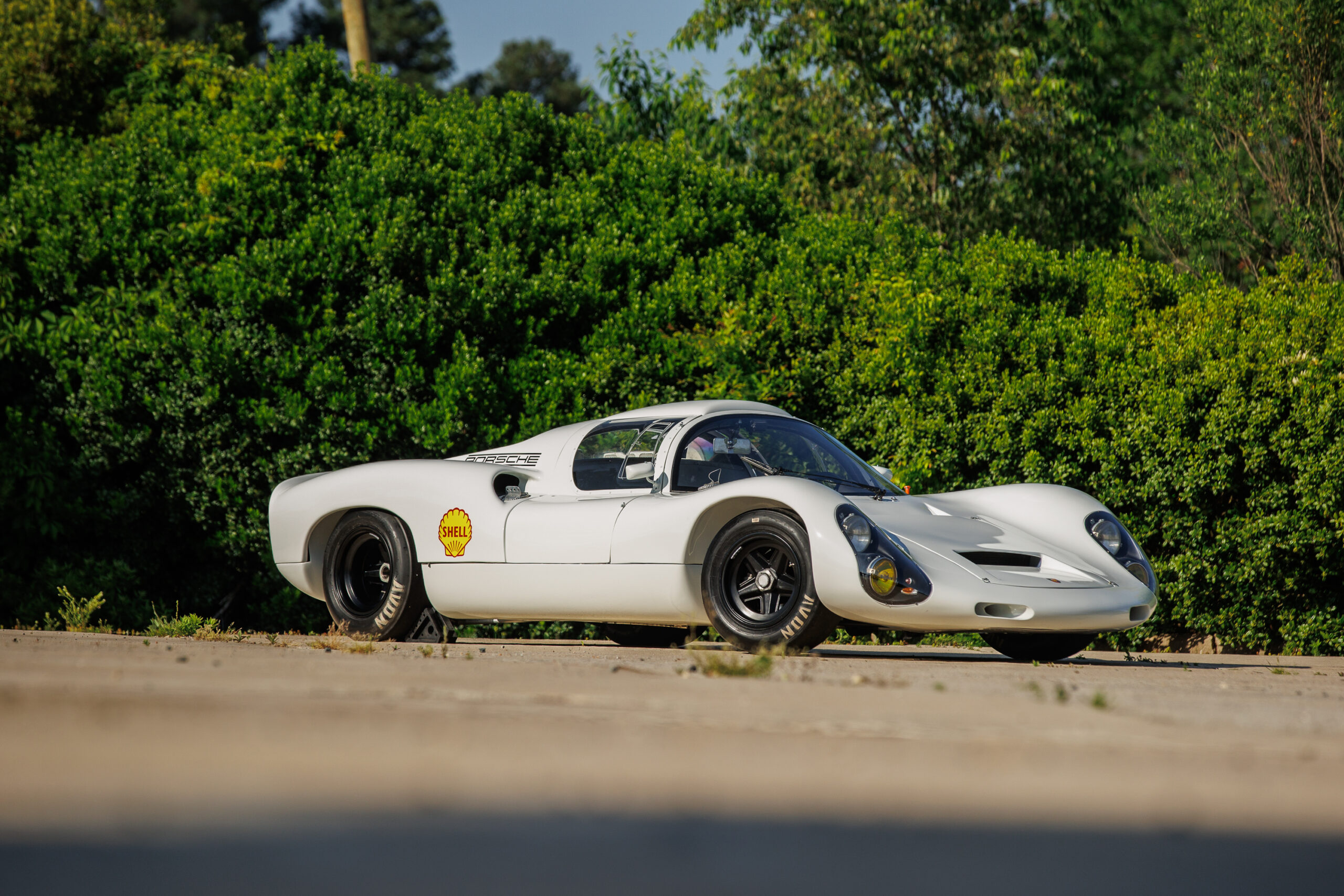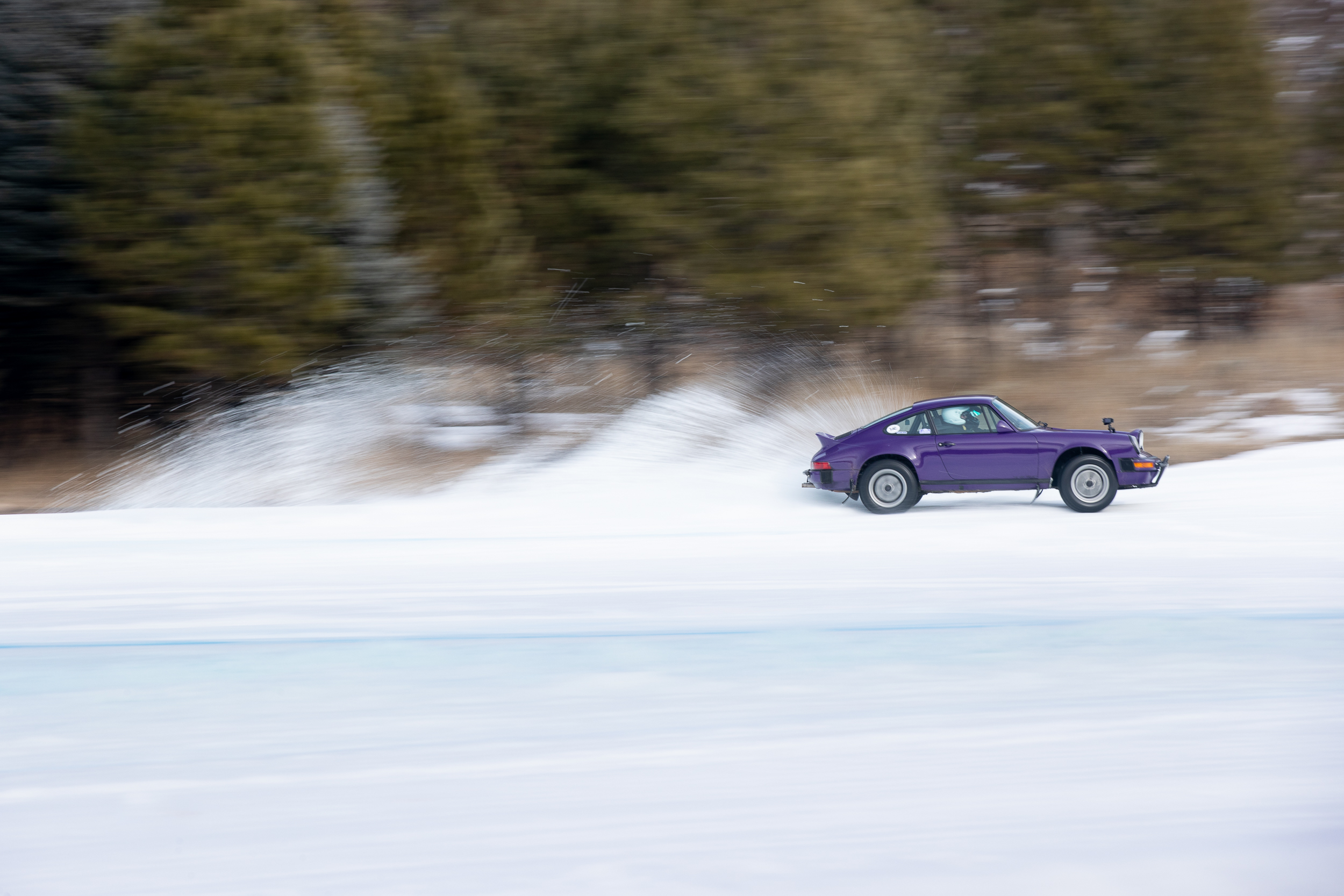Throughout Porsche’s racing history, 911s with an “R” in their model designation were dreamt up by minds inside the building. Ferdinand Piëch of course gets credit for the 911R. A broad cast of characters – motivated by company chief Ernst Fuhrmann – devised the 911 RS Carrera 2.7. But while the idea for one of the company’s little known and less understood models, the 1984 911 SC-RS emerged within, the driving force for its creation came into the building from good friends in England.

The Back Story
Rothmans International, the tobacco company and its affable public relations boss Sean Roberts were well known around Weissach. Rothman’s greatest market saturation was in Europe and the UK. They had been principal sponsors for Porsche 956 efforts with great success for both firms, beginning with the 1st, 2nd, and 3rd, place finishes of Rothmans livery cars at the 1982 Le Mans. That same year, they supported Walter Röhrl as he won the World Rally Championship with Opel. When Opel announced it was withdrawing at the end of the 1983 season, Roberts approached Porsche about an entry for that series. Jürgen Barth and his colleague and friend Roland Kussmaul had done several international rallies in a company-prepared 924 and had begun lobbying for a Porsche to return to these events in 911s. Barth, as head of customer racing, began reading rules and searching parts bins. The fourth cast member in this production was David Richards who had retired from professional rally competition at the end of 1981. Over the next two years he worked with Rothmans organizing a new rally series throughout the Middle East at the same time he was launching his own new rally team. A number of meetings, a good bit of research, and several handshakes later, a deal was done. Porsche could produce a car. Richard’s new company Prodrive was contracted to prepare it and manage the newly formed Rothmans Porsche Rally Team in the European Rally Championship and the newly formed Middle East Championship.
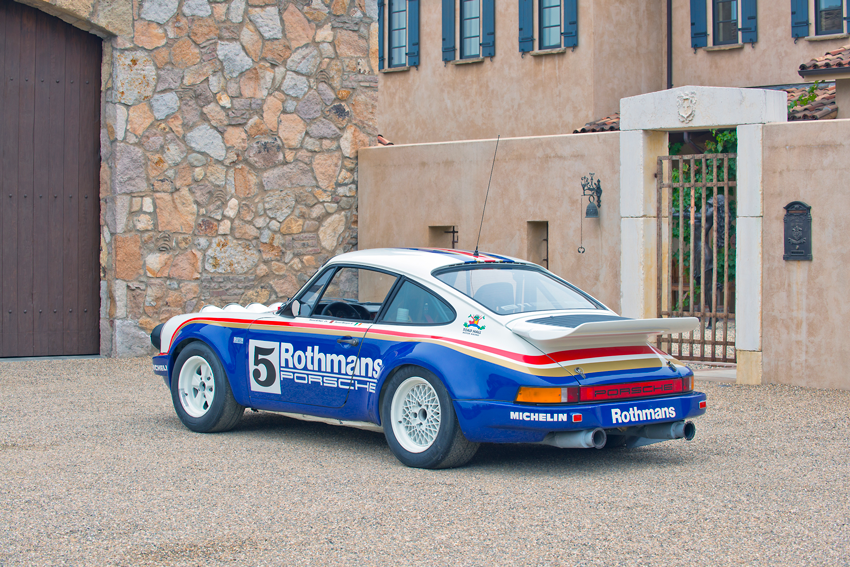
The Car
The FIA had introduced Group B regulations for the 1982 racing and rally season. These required that manufacturers had assembled at least 200 matching examples for the car’s homologation. The FIA encouraged high technological innovation, and removed the upper limit on Turbocharger boost. Deep inside Weissach, engineering director Helmuth Bott set his staff to work on all-wheel drive 911s. But everyone knew this development was going to take time, and Rothmans was standing by.
Another FIA regulation permitted an “evolution” homologation. This allowed a manufacture to assemble 20 examples of a just-discontinued model, letting it fit within past production quantities rather than compete as a prototype (as the 911R had to do.) This fit the 911 SC perfectly because Porsche had introduced the G-series 911 Carrera 3.2 in late 1983. It also explains how this 1984-model racecar was designated 911 SC-RS. In January 1984, Barth confirmed in writing to Porsche Cars Great Britain director John Aldington that they “are building a total of 20 vehicles of this type which are planned to be ready for delivery by February.” The record-keepers at Flacht recorded the car as the Typ 954. Barth went on to list two cars committed for Belgian buyers, four for the U.S., one each for Japan, Mexico, Bahrain, and South Africa, and seven for West Germany, of which “the five Rothmans cars being registered in Germany by Messrs. Brinkmann of Bremen,” Porsche distributors in that city.
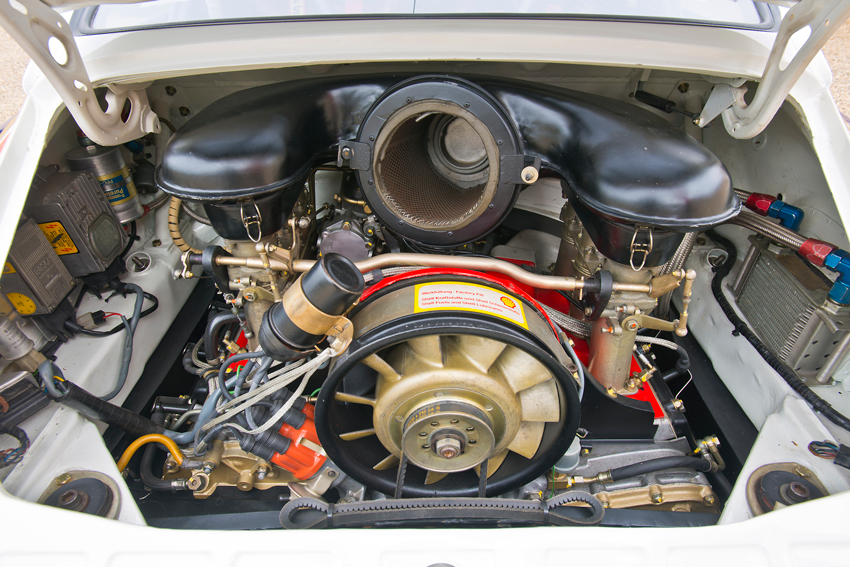
Barth, Kussmaul, Gerd Schmid (product manager for racing vehicles), and their customer racing engineers developed the 2,996cc Typ 930/12 engine to produce 250 horsepower at 7,000 rpm for “touring” purposes and 270 horsepower at 7,600 rpm for rally competition. Torque was 184 foot-pounds at 6,500 rpm. They used a Bosch/Kugelfischer mechanical plunger pump injection, higher-lift camshafts, the 1974 RS exhaust system, and BHKZ single-plug ignition. (With further Prodrive and Weissach development, these engines developed 290 horsepower at 7,500 by June 1984.) A single dry-plate 225mm clutch connected the engine to the Typ 915/71 transmission that they fitted with oil cooling and a ZF 40-percent limited slip differential. With its 80-liter fuel tank (and a wood stick to check the level) and a 13-liter oil tank empty, the car weighed 960 kilograms (2,116 pounds,) the absolute minimum allowed for its under three-liter displacement class. Adding the integral roll cage, aluminum doors and front deck lid, Kevlar engine cover and wing, 14-kilogram fire extinguishing system, Halda navigation computer, additional lights, and full tanks, the car weighed 1,200 kilograms (2,646 pounds) at rally starting lines, according to Prodrive’s entry papers submitted with the car at the start of the Middle East Rally Championship season. Barth quoted acceleration from 0-to-100 kilometers per hour in 5 seconds.
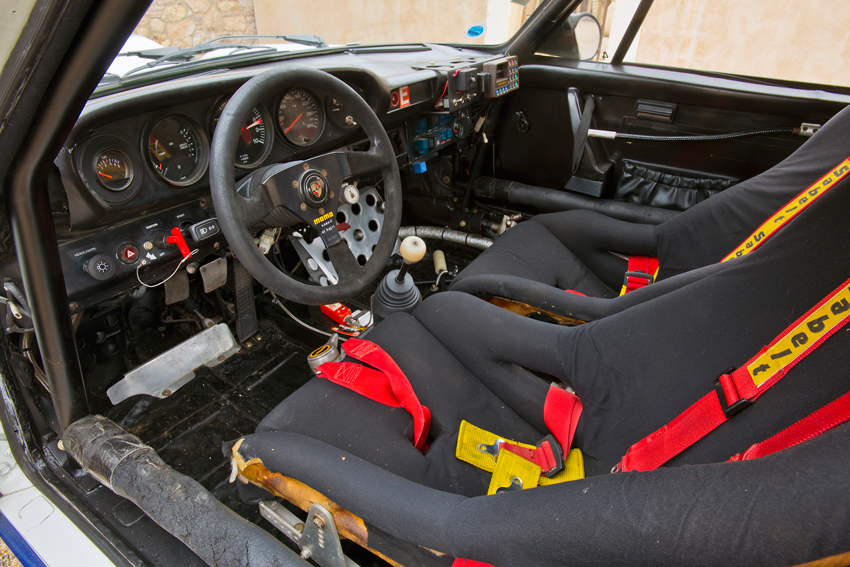
Prescott Kelly, who eventually acquired one of the cars, wrote about them in the August 1985 issue of Panorama: “The suspension carries adjustable Bilstein struts with coil-overs. Adjustable pick up points make it easy to raise or lower the car. The front end has the 1974 Carrera-type sway bar; the rear end is very turbo-like (bananas, et al.) Brakes are also 930, née 917 (second generation) units.” By mid-April 1984, Barth convinced the FIA to homologate the coil-over Bilsteins because the original torsion bars did not survive the testing. Porsche attached a price of 188,100 DM to the cars, which at 1983 exchange rates, was $73,765 before VAT.
Once Richards’ crew received the cars, they completely disassembled each one, examined every weld, every fitting, every connection, every element, and put them back together to the standards Richard’s had used to win previous World Rally Championships.
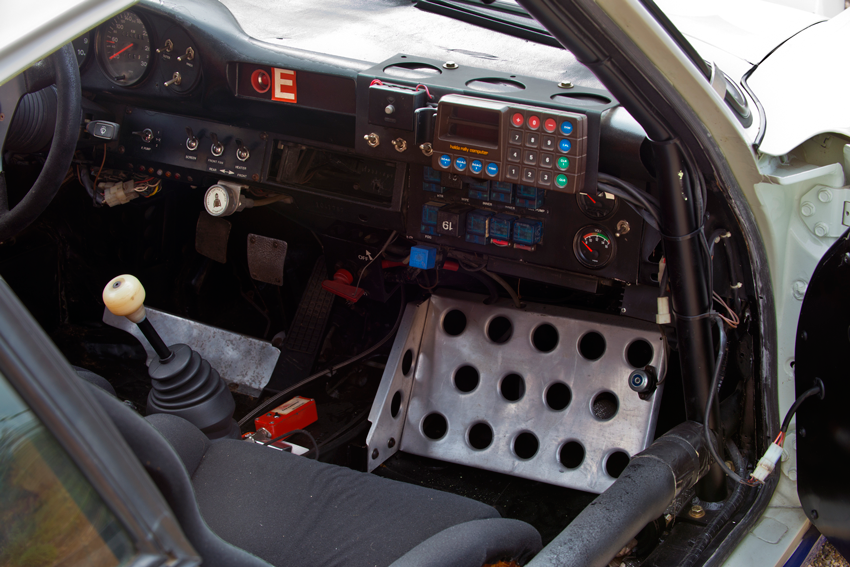
This Car
Porsche Kundensport worked with Porsche Cars Great Britain to import this car, chassis 110 008, and two others into the UK “to register the cars as prototypes – without Type Approval.” This greatly simplified the import process. Chassis 008 was identified as Rothmans-Porsche No. 4. Rothmans eventually ended up with six of the cars for competition. The car reached Prodrive in April 1984. Following extensive testing and modification, Rothmans entered it in several European Rally Championship events with Finnish rally driver Henri Toivonen. While he retired before finishing the Circuit of Ireland, he won the Ypres 24 Hours in Belgium and the Madeora Rally in Portugal. Gearbox problems plagued all the SC-RS cars – telexes between Prodrive and Kundensport reflect frustration and disappointment on both sides – and this car did not finish the Manx Rally in Great Britain.
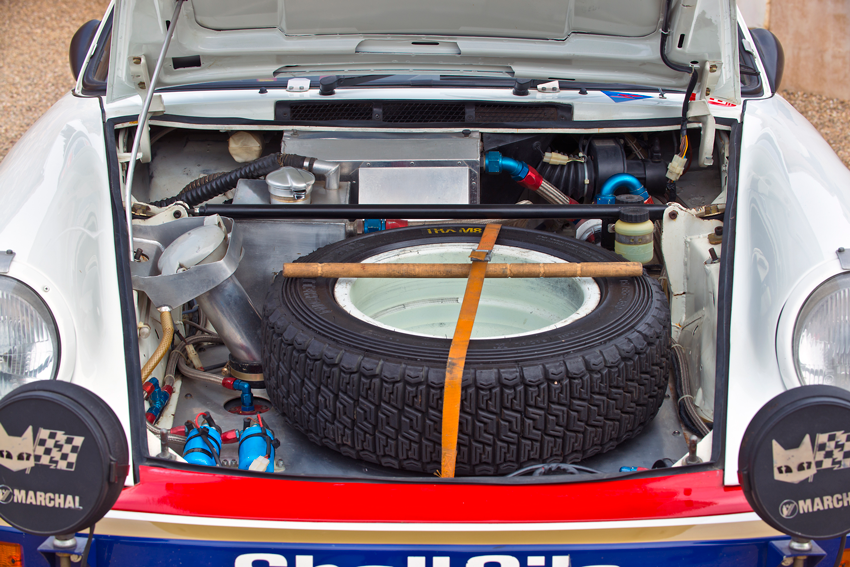
At the same time, Qatar-born driver Saeed Al Hajri campaigned one of the Rothmans SC-RS cars and won the FIA Middle East Championship in 1984. He repeated again in 1985, a run that included a first place in this car in the Jordan Rally. (He won the 1985 Oman Rally in a different SC-RS.) He experienced inconsistent success in 1986, capturing 4th overall in the Acropolis Rally in Greece and 3rd in the Limburgia Rally in the Netherlands in 008. But 1987 was a great year for Al Hajri and this car, with two firsts in the Qatar and the Kuwait Rally, and two seconds in the Jordan and Oman rallies. It was a very successful season for Al Hajri and once again he won the FIA Middle East Rally Championship.
By this time, however, Group B was done. Technological advances turned these cars into 2,500-pound 500+-horsepower rockets; spectator fascination with such performance became racing tragedies, and the FIA discontinued the category, lumping international rallying under Group A regulations for more widely-produced cars at the end of 1986. It left countless highly evolved all-wheel drive racecars without a home although it allowed the rear-drive “evolution” SC-RS to continue in European and Middle East series through 1987. Following its Rothmann’s sponsored success in Paris-Dakar in 1986 with the 959s, and Al Hajri’s championship in 1987, Porsche withdrew from international rallying.
And then it was done. The cars retired. Rothmanns moved on to sponsor Suburus in rallying. Richards and Prodrive ran BMWs for six years in rallies and touring car races. The SC-RS cars dispersed. By 1985 five of the cars were in the U.S., though none of the Rothmans cars left the team until their racing was done.
A reunion in France in September 2009 brought more than half-a-dozen of the Typ 954s together, perhaps the only time since David Richards assembled the full Rothmans team for a photo shoot.
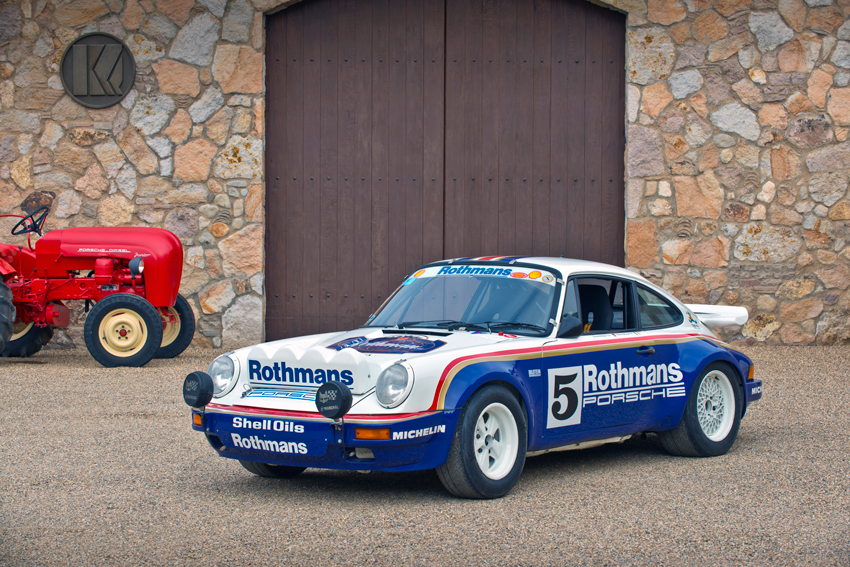
Post Script
Not for the first time, Porsche found a use for leftover parts. It seems that some time after Customer Sports completed the 20 homologated cars for road and Group B rally use, enough bits were located to assemble a 21st that it shipped off to a well-regarded private customer in Switzerland. This car, 008, was one of the early ones, one of the few with a litany of rally starts and finishes in its log book, and one of the very few with a Rally Championship behind its name.
